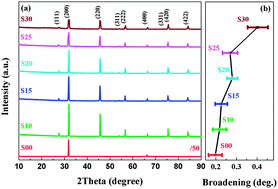Origin of the unexpected room temperature ferromagnetism: formation of artificial defects on the surface in NaCl particles
Abstract
The unexpected room temperature ferromagnetism in pure

* Corresponding authors
a
Key Laboratory for Magnetism and Magnetic Materials of MOE, Lanzhou University, Lanzhou 730000, P.R. China
E-mail:
xueds@lzu.edu.cn
Fax: +86-0931-8914160
Tel: +86-0931-8912237
b College of Physics and Electronic Engineering, Northwest Normal University, Lanzhou 730070, P.R. China
The unexpected room temperature ferromagnetism in pure

 Please wait while we load your content...
Something went wrong. Try again?
Please wait while we load your content...
Something went wrong. Try again?
J. Zhang, D. Gao, M. Si, Z. Zhu, G. Yang, Z. Shi and D. Xue, J. Mater. Chem. C, 2013, 1, 6216 DOI: 10.1039/C3TC30972J
To request permission to reproduce material from this article, please go to the Copyright Clearance Center request page.
If you are an author contributing to an RSC publication, you do not need to request permission provided correct acknowledgement is given.
If you are the author of this article, you do not need to request permission to reproduce figures and diagrams provided correct acknowledgement is given. If you want to reproduce the whole article in a third-party publication (excluding your thesis/dissertation for which permission is not required) please go to the Copyright Clearance Center request page.
Read more about how to correctly acknowledge RSC content.
 Fetching data from CrossRef.
Fetching data from CrossRef.
This may take some time to load.
Loading related content
